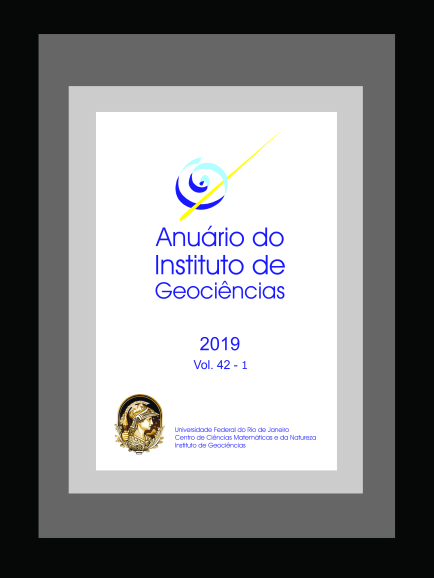Shear Wave Velocity Estimation by a Joint Inversion of HVSR and f-k Curves under Diffuse Field Assumption: A Case Study of Sobradinho Landslide
DOI:
https://doi.org/10.11137/2019_1_742_750Keywords:
Ambient seismic noise, Rheology, Slip surfaceAbstract
Brazilian landslides are characterized as shallow, clay rich and are commonly triggered by the summer rainfalls. Therefore, the landslide geological information, such as shear surface location, has a paramount importance in their mechanism comprehension. The most adapted methods for the estimation of shear wave velocity profile are borehole stratigraphic logs or Standard Penetration Test (SPT) and Cone Penetration Test (CPT). However, the present study applied shear wave velocity estimation of Sobradinho landslide (SLS) by a joint inversion of horizontal to vertical spectral ratio (HVSR) curve and dispersion curve (DC) extracted from frequency-wavenumber (f-k) analysis of ambient noise records. HVSR curves at all the stations in the area exhibit the ubiquitous resonance frequency peak at 2 Hz indicates that at these stations the substratum is common. The f-k results for E-W component let us obtain an acceptable DC between 5 and 7 Hz range. Finally, joint inversion was interpreted based on the diffuse field assumption. The initial model was proposed to be a three-layered over a half-space. Results of joint inversion indicate that the substratum is at 24 m depth, with Vs values close to 1500 m/s. DC defines two layers overlaying the substratum: superficial layer with velocities near to 200 m/s (7m thick), and the second layer with Vs value of 1000 m/s. We think that abrupt rheology (stiffness) change between the first and the second layer could provide an evidence of the landslide re-activation during moderate to strong rainfall events. The proposed methodology will prove a reconnaissance survey for the detailed geotechnical investigations that will confirm the obtained results.Downloads
Download data is not yet available.
Downloads
Published
2019-12-01
How to Cite
Hussain, Y. (2019) “Shear Wave Velocity Estimation by a Joint Inversion of HVSR and f-k Curves under Diffuse Field Assumption: A Case Study of Sobradinho Landslide”, Anuário do Instituto de Geociências. Rio de Janeiro, BR, 42(1), pp. 742–750. doi: 10.11137/2019_1_742_750.
Issue
Section
Article
License
This journal is licensed under a Creative Commons — Attribution 4.0 International — CC BY 4.0, which permits use, distribution and reproduction in any medium, provided the original work is properly cited.















